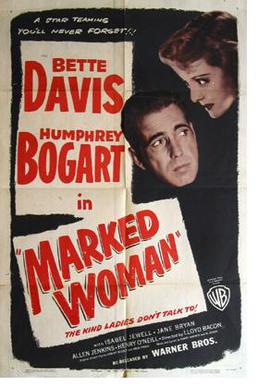
Marked Woman is a 1937 American dramatic crime film directed by Lloyd Bacon and starring Bette Davis and Humphrey Bogart, with featured performances by Lola Lane, Isabel Jewell, Rosalind Marquis, Mayo Methot, Jane Bryan, Eduardo Ciannelli and Allen Jenkins. Set in the underworld of Manhattan, Marked Woman tells the story of a woman who dares to stand up to one of the city's most powerful gangsters.
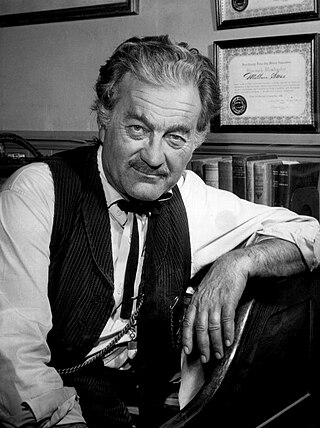
Hugh Milburn Stone was an American actor, best known for his role as "Doc" on the Western series Gunsmoke.
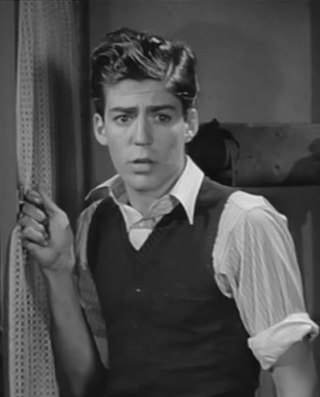
William Halop was an American actor.

Key Largo is a 1948 American film noir crime drama directed by John Huston and starring Humphrey Bogart, Edward G. Robinson and Lauren Bacall. The supporting cast features Lionel Barrymore and Claire Trevor. The film was adapted by Richard Brooks and Huston from Maxwell Anderson's 1939 play of the same name. Key Largo was the fourth and final film pairing of actors Bogart and Bacall, after To Have and Have Not (1944), The Big Sleep (1946), and Dark Passage (1947). Claire Trevor won the 1948 Best Supporting Actress Academy Award for her portrayal of alcoholic former nightclub singer Gaye Dawn.
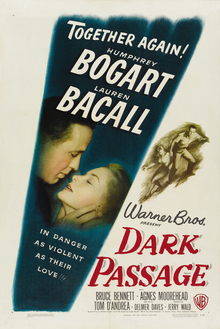
Dark Passage is a 1947 American film noir directed by Delmer Daves and starring Humphrey Bogart and Lauren Bacall. The film is based on the 1946 novel of the same title by David Goodis. It was the third of four films real-life couple Bacall and Bogart made together.

The Desperate Hours is a 1955 film noir starring Humphrey Bogart and Fredric March. It was produced and directed by William Wyler and based on the 1954 novel and 1955 play of the same name, written by Joseph Hayes, which were loosely built on actual events. The film takes place on the Northside of Indianapolis and took great pains to be accurate as to street names and locations within the city and Indiana in general.

Barton MacLane was an American actor, playwright, and screenwriter. He appeared in many classic films from the 1930s through the 1960s, including his role as General Martin Peterson on the 1960s NBC television comedy series I Dream of Jeannie, with Barbara Eden and Larry Hagman.
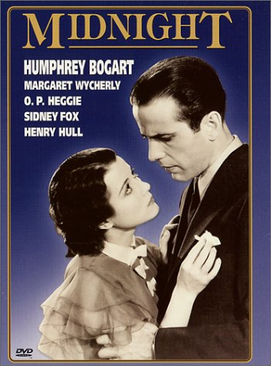
Midnight is a 1934 American pre-code drama film, the first directed by Chester Erskine, and starring Sidney Fox, O.P. Heggie, Henry Hull and Margaret Wycherly. It was based on a Theatre Guild play with the same name by Paul and Claire Sifton. The film was produced for Universal and was shot on a modest budget of $50,000 at Thomas Edison Studios, which producer/director Chester Erskine had re-opened specifically for the shoot.

The Maltese Falcon is a 1931 American pre-Code crime film based on the 1930 novel The Maltese Falcon by Dashiell Hammett and directed by Roy Del Ruth. The film stars Ricardo Cortez as private detective Sam Spade and Bebe Daniels as femme fatale Ruth Wonderly. The supporting cast features Dudley Digges, Thelma Todd, Walter Long, Una Merkel, and Dwight Frye. Maude Fulton and Brown Holmes wrote the screenplay; one contemporaneous report said that Lucien Hubbard was assisting them.

Knock on Any Door is a 1949 American courtroom trial film noir directed by Nicholas Ray and starring Humphrey Bogart. The movie was based on the 1947 novel of the same name by Willard Motley. The picture gave actor John Derek his breakthrough role as young hoodlum Nick Romano, whose motto was "Live fast, die young, and have a good-looking corpse."

Crime School is a 1938 American crime drama film directed by Lewis Seiler and starring the Dead End Kids, Humphrey Bogart and Gale Page. It was produced and distributed by Warner Brothers.

The Angels Wash Their Faces is a 1939 Warner Bros. film directed by Ray Enright and starring Ann Sheridan, Ronald Reagan and the Dead End Kids.

Invisible Stripes is a 1939 Warner Bros. crime film starring George Raft as a gangster unable to go straight after returning home from prison. The movie was directed by Lloyd Bacon and also features William Holden, Jane Bryan and Humphrey Bogart. The screenplay by Warren Duff was based on the novel of the same title by Warden Lewis E. Lawes, a fervent crusader for prison reform, as adapted by Jonathan Finn.

Up the River is a 1930 American pre-Code comedy film directed by John Ford, and starring Claire Luce, Spencer Tracy and Humphrey Bogart. The plot concerns escaped convicts, as well as a female convict. It was the feature film debut role of both Tracy and Bogart. Despite Bogart being billed fourth, Tracy's and Bogart's roles were almost equally large, and this is the only film in which they appeared together. Up the River is also Bogart's only film directed by John Ford. Bogart's image is featured with Luce on some of the film's posters rather than Tracy's since Bogart was the romantic lead with Luce. Fox remade the film in 1938 starring Preston Foster and Tony Martin playing their roles.

George E. Stone was a Polish-born American character actor in films, radio, and television.
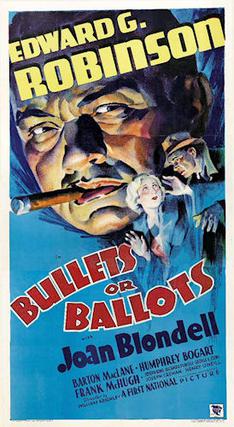
Bullets or Ballots is a 1936 American crime thriller film starring Edward G. Robinson, Joan Blondell, Barton MacLane, and Humphrey Bogart. Robinson plays a police detective who infiltrates a crime gang. This is the first of several films featuring both Robinson and Bogart.
San Quentin is a 1937 Warner Bros. drama film directed by Lloyd Bacon and starring Pat O'Brien, Humphrey Bogart, and Ann Sheridan. It was shot on location at San Quentin State Prison.
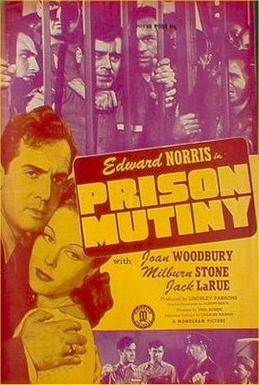
You Can't Beat the Law is a 1943 American drama film directed by Phil Rosen; also known as Prison Mutiny.

The Big Shot (1942) is an American film noir crime drama film starring Humphrey Bogart as a crime boss and Irene Manning as the woman he falls in love with. Having finally reached stardom with such projects as The Maltese Falcon (1941), this would be the last film in which former supporting player Bogart would portray a gangster for Warner Bros..
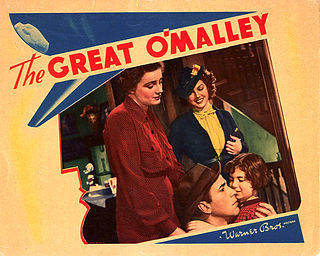
The Great O'Malley is a 1937 American crime drama film directed by William Dieterle and starring Pat O'Brien, Sybil Jason, Humphrey Bogart, and Ann Sheridan. The 1925 silent version The Making of O'Malley starred Milton Sills, Dorothy Mackaill and Helen Rowland.



















